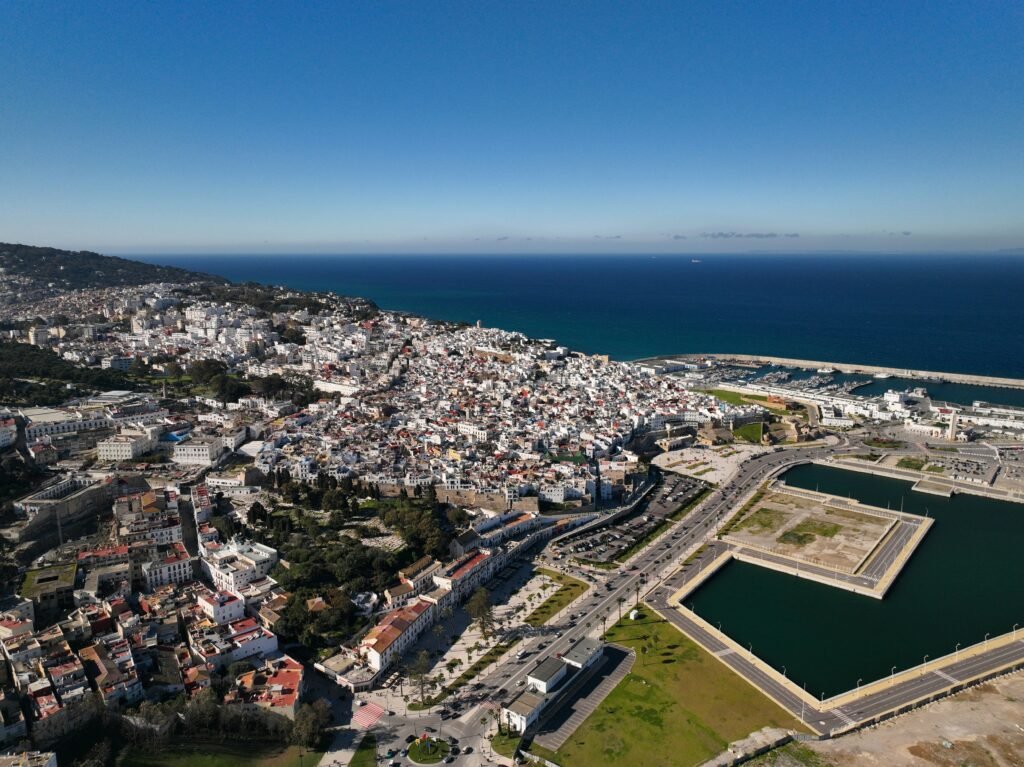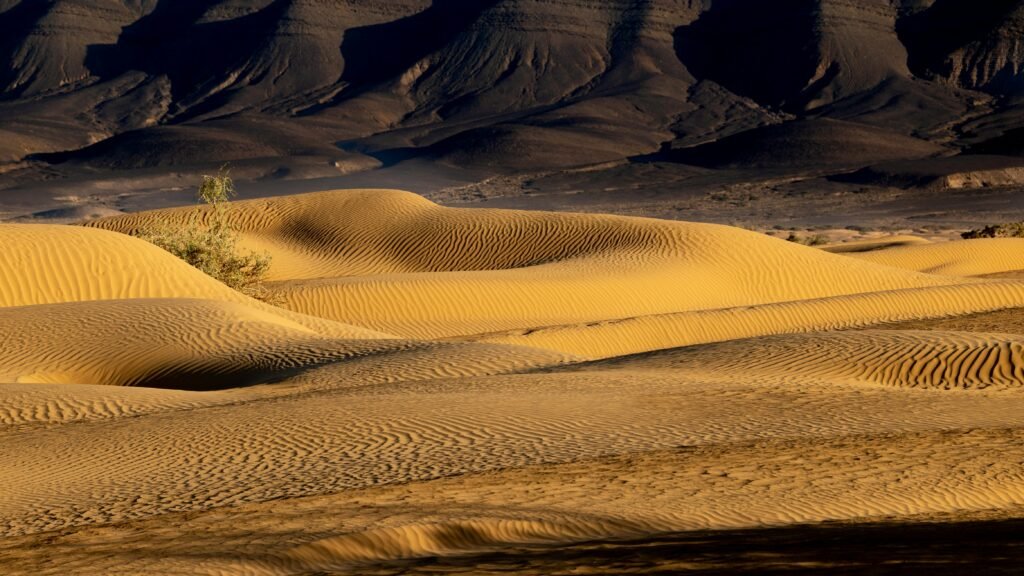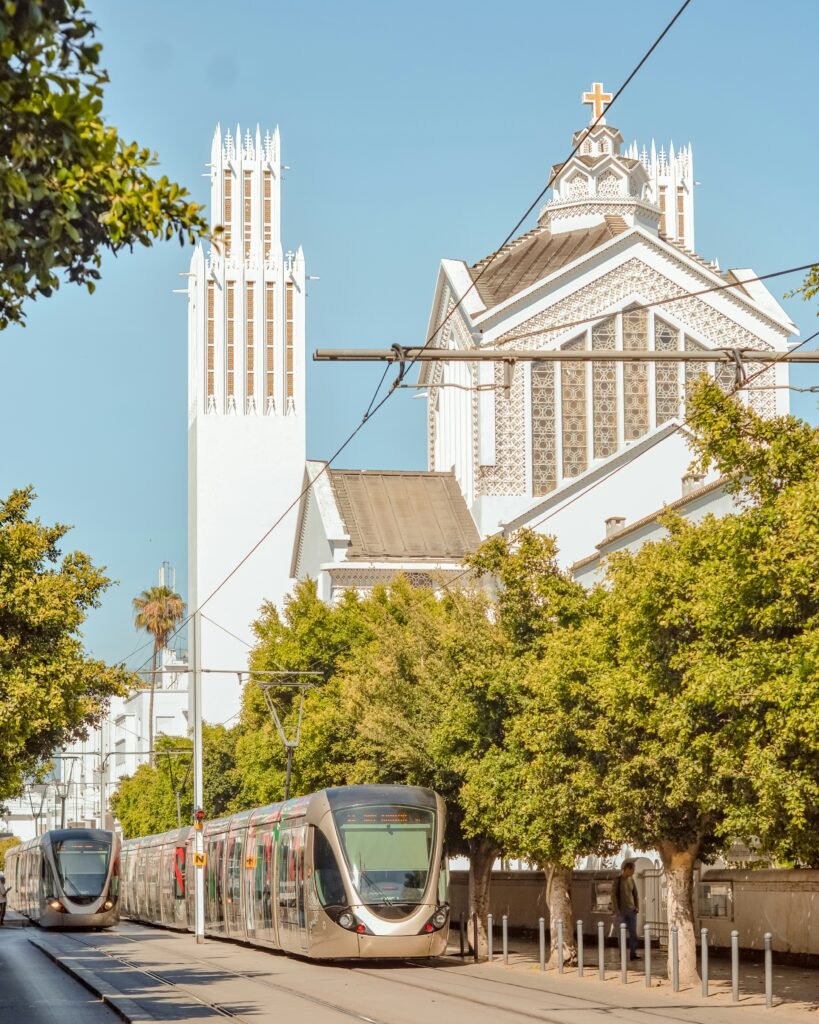I say “kiftina”, you say “kideira”.
“How are you?” in Tangier versus the rest of Morocco.
Morocco may not be such a big country, but there are still variations, even in language. While the local Moroccan Arabic language – Darija – is spread across the whole of northern Africa except Egypt, the version spoken in Tangier and the north has distinctive differences, partly because of its proximity to Spain which is visible from all along the northern coastline. It is less than 20km away, just a 40 minute ferry ride from Tangier. It is wealthier, and more of a melting pot than the rest of Morocco, with the exception of only Casablanca and Rabat.
The further south you go, the more conservative and traditional it becomes as you reach the older, hotter and dryer areas.
The north is wetter and has a milder climate, with Tangier ranging from 8⁰C to 23⁰C in the winter. Summer only goes up to the low 30s, and is generally kept comfortable by sea breezes.
In the south, however, overnight minimums go down to a chilly zero in the winter, with daily maximums in the high 40s in summer.
There are essentially four regions, each with their unique differences.

The North
At the top you have the Mediterranean and both the blue and the white cities are here – Chefchaouen and Tangier. Tangier has a population of around 1 million. It is a place for people to come for a holiday to chill at the cafes and beaches by day, and the restaurants, night clubs and bars at night.
To me it is also a frontier town in the sense of the wild west. Even though it fronts onto the sophistication of Europe, there is a wildness to Tangier.
Perhaps that’s what has made it so appealing to so many writers and artists from Europe over the years. It is certainly a magnet for creative people. Hotels are full of photos of the rich and famous who have spent time here, notably the El Minzah hotel just below Café de Paris.
The Tangerinn Pub was frequented by Jacques Kerouac. Villa Mabrouk was owned by Yves St Laurent and visited by the likes of Mick Jagger. The Fuentes Café in the medina was home for several months to Henri Matisse and Antonio Fuentes, the Toulouse Lautrec of Tangier.
The architecture has a strong Moorish (Arabic-Islamic) influence similar to southern Spain, with the pointed archways and blue-green tiles, highly detailed decorative features, fountains and Arabic script.
This is interspersed with the colonial influence, especially the Spanish yellow trims.
Darija is significantly different to the south with a strong influence from Spanish, a language also spoken in the north. Most of Morocco speaks only Darija and French.
The north is green and very pretty along its coastal fringes, both Mediterranean and the Atlantic.

The Administrative Centre
This is the sophisticated middle. There’s the capital and cultural centre, Rabat. Casablanca is Morocco’s biggest city of around 6 million, and also claims the label of the white city
Around Casablanca is the only area in Morocco with an Arabic concentration. Morocco is not an Arabic country. It is Amazigh, the indigenous people spread from the Rif and Atlas Mountains across the northern part of Africa, a unique cultural enclave separated from the rest of Africa by the Sahara. In fact, a large percentage of Moroccans grew up with the Berber-Amazhig language, at least in the background, if they didn’t learn to speak it. Arabic has been superimposed with the influence of Islam
Away from the coast you have your old capitals:- Meknes; Fes, the yellow city, scientific and Islamic capital; and Volubilis, ruins of the ancient Roman crossroads city.
There is also a lot of money in these areas. But while the two coastal cities of Rabat and Casablanca are very cosmopolitan and open, the inland cities become much more conservative, proud of their long past. Fes is the home of the oldest university ever established, ai-Qarawiyyin.
Together with the northern coastal areas, the area around Meknes and Fes is the food bowl of Morocco. Even though it gets very hot in summer, it still has the prettiness of green produce growing.

The Coastal Hippy South
With Agadir at its centre, it is a beach city known for its simple life and organic food. Even better known is the hippy beachside town of Essaouira, well worth a visit if you are down that way.
The area takes on the wild of the Atlantic, and in many places windy, but there are endless beautiful coastal spots, which is what draws the hippies and beach lovers. Game of Thrones used the sea walls of Essaouira as one of its main locations.
One of the biggest things about the coastal south is the huge Gnaoua music festival held in Essaouira every year in the summer. Players of pop, jazz, contemporary music and rock are invited to perform, play and jam. It lasts for four days and includes some events which are free. As many as 500,000 people come for it.
The festival is the height of promoting Morocco’s own music, the mesmerizing and engaging Gnaoua that comes from the Amazigh traditions, and its other variations such as Issaoua. It can be mesmerizing, spiritual and therapeutic in a way that people sometimes get so deeply entranced by it they can pass out. It is said that the music speaks to the subconscious.

Desert South
And then we have the Sahara. With your iconic red city of Marrakech at the northern edge, another frontier city but in a totally different way. It is your first significant city for camel trains crossing the Sahara, and as such has always been a trading town, a huge market place, with Jemaa el-Fnaa square at its core.
It is still a trade and market city. The traded goods are now handcrafts from local artisans rather than exotic goods from lands across the desert. The red and deep ochre buildings have the Berber-Amazigh influence with squared geometric patterns, pointed step-corners, and curved arches. Don’t be mistaken – it has a lot of history too. But it is, and I imagine always has been a wild border town.
There are two parts of the Sahara which come into Moroccan territory – from Marrakech the desert trips take you to the stony part called Chigaga. But if you head across instead to Merzouga near the Algerian border you will find the magnificent red sand dunes, the classic desert image.
The desert is a magnificent array of colours, from pale shades of whites and blues, all the way to the intensive red that gives Marrakech its ‘red city’ label.
There are even regional variations in the dishes. In Marrakech you have the tanja, a slow cook of meat and vegetables in clay. But typical throughout Morocco is tagine. Try a food event at Blue Door Cuisine, drink tea with views of Spain, and maybe learn how to cook a classic Moroccan tagine.
Written by OzzyHopper.
For more blogs by OzzyHopper, check out the ozzyhopper.com. For a more in-depth experience of the south, read “The Schizophrenic Lady” about my visit to Marrakech.




